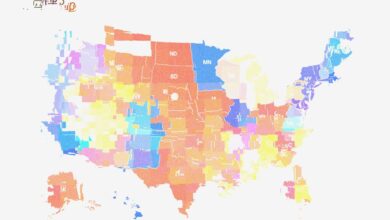

Photo: Ric Tapia/Getty Images
When I was in college in the ‘90s, I once played the old EA Sports College Football video game for so many hours in a row that my roommates began to look to me like Otto the Orange and the Stanford Tree. That game taught me more about college football than I learned being an actual fan: which teams ran interesting offenses, how stadiums in states I’d never visited really looked, what the University of Hawaii “Co-Ed” fight song sounded like. By the time I actually visited Georgia’s Sanford Stadium for the first time, I felt like I’d already been there 100 times.
This year, for the first time since 2013, EA put out a new version of the game. It features every major team and, for the first time, nearly every major player, thanks to the new world of NIL (Name, Image and Likeness), which allows players, finally, to get paid. It’s fortuitous that the game — which every person who obsessed over it in college like me has spent the last month constantly playing—came out this year, of all years, because now it can help train people on the crazy new rules of college football. The sport has been wildly fluctuating for a while now, but it is going to look entirely different this year than it ever has, in ways that will confuse anyone who thought they had it figured out. (Even the first game is an oddity: Florida State vs. Georgia Tech…in Ireland, naturally.) After a month of my kids smoking me in the video game, I think I’ve got a handle on the new landscape. For the rest of you, here’s a guide to what’s different about college football now, which is pretty much everything.
The primary storyline right now in college football, and really college athletics, is the radical realignment of the traditional conferences. It increasingly looks like we’ll end up with two major consolidated conferences, the Big Ten and the SEC, essentially turning college football into a version of the NFL. For now, the Big 12 and ACC are still hanging around, albeit in diminished, grotesquely mutated form. The big news this offseason was the death of the Pac-12, which lost Washington, Oregon, UCLA and USC to the Big Ten, leaving the rest of its teams scrambling for someplace, anyplace, to go. Thus: California and Stanford are now in the ACC (with, uh, Syracuse and Georgia Tech), Colorado, Arizona, Arizona State and Utah are now in the Big 12 (with, uh, Central Florida, West Virginia and SMU) and Washington State and Oregon State have been left behind, floating around college football like ghosts, rattling chains of guilt the rest of the sport will try not to hear. The ACC and Big 12 shouldn’t breathe easy; Florida State and Clemson are actively trying to get out of the ACC, and the Big 12 makes so little it’s difficult to understand how it can eventually survive. (It has even considered selling the rights to its name and going by “the Allstate Conference.” It’s never a good sign for a boxer’s career when he gets a casino’s logo tattooed on his chest.) Oh, also, Texas and Oklahoma are in the SEC now. There is more change coming, bigger, more lasting ones, but for now, the standings are going to look surreal and insane every time you glance at them.
It felt like a radical change when the College Football Playoff debuted with four teams in 2015, but that’s nothing compared to the new reality. There will be 12 teams in the playoffs this year, a full-on bracket fit for an office pool. The top four seeds go to the winners of the four major conferences’ championship games, and will receive a first-round bye. The 5-12 teams will be seeded by a committee at the end of the regular season, and one of the spots is reserved for a lower-level Group of Five team, with teams like Appalachian State, Memphis and the Falwell Family Festival that is Liberty U. as the favorites to grab it this year. This is a lot more games to keep track of than before. The playoffs will now last for a full month, with the championship game coming on January 20 at Mercedes-Benz Stadium in Atlanta. The extended postseason will instantly become the focus of every discussion the entire season, since more teams than ever before have a chance at the title. (Last year, Missouri, Mississippi and Liberty would have all made it.) And by the time you get used to that, they’re going to change it again. In two years, the tournament is expanding to 14 teams, and is likely to expand again later. Eventually, you and I will personally qualify for it.
Nick Saban has been the central figure of college football for nearly two decades. He turned Alabama into an Evil Empire that is as responsible as any school for essentially professionalizing the sport. Saban did the job too well, though: It is widely assumed that he didn’t have the energy to keep up with all the changes in the sport he himself changed so much. He’s being replaced by a guy named Kalen DeBoer, a good coach who took Washington to the national championship game last year, but is still a coach at Alabama named “Kalen.” (It’s going to be a tough job, is what I’m saying.) Meanwhile, the other outsized personality coach of college football, Michigan’s Jim Harbaugh, left to coach the Los Angeles Chargers of the NFL, bolting just in time to get a toothless suspension from the NCAA and leave his former assistant Sherrone Moore with a diminished roster and recruiting violations in his wake. These are two titans vanishing from the sport, with no real obvious polarizing figures (save for Colorado coach Deion Sanders, who is more bluster than results at this point) next in line for their thrones.
As college football becomes more wholly run by television executives, those executives are dictating not just when teams play, but who, and where. CBS and Fox are now essentially the Big Ten channels and ESPN is the SEC channel, though there’s also Peacock and the Big Ten Network and the SEC Network and then TBS is going to show playoff games and it’s basically impossible to keep track of. Just know that the timing and platform for every game you watch was the result of an endless number of committee meetings held in New Jersey and Connecticut, those famous college-football hotbeds.
Yep, just like in the NFL. And they’re there for exactly the same reason as in pro football: To carve out time for more TV commercials.
The most well-known player in college football over the last two seasons was USC’s Caleb Williams, who ended up being the top overall pick of the Chicago Bears. There aren’t any obvious successors.. The most likely candidates are all quarterbacks: Colorado’s Shedeur Sanders (Deion’s son), Texas’ Quinn Ewers (unless he loses his job to Arch Manning) and Georgia’s Carson Beck (who is excellent but also kinda dull). Otherwise, there are few big national names in the sport. This is largely due to widespread use of the transfer portal, which is great for players and teams in need of upgrades but rough on the casual fan just trying to keep track of who’s playing where. Usually a marquee player or two emerges over the course of a season, but one of the ironies of the player empowerment era is that they just don’t seem to get as nationally famous as they used to.
Players are now making money in a way they never could before. They have also learned — like anyone in the working world who discovers that the best way to get a raise is to leave for another job — that transferring is a quick route to more cash. But people often put too much weight on NIL to explain college football’s tectonic shifts. The real reason conferences are morphing and networks are taking over everything is that college football has become a television cash lifeline for a strained media industry. And there’s no overarching authority figure who has the sports’ best long-term interest in mind. Yes, players are getting paid, which is overdue. (So overdue that teams and conferences now have to give former players backpay.) But the money they’re making is nothing compared to what leagues and conferences get from TV networks. That’s what’s changing the sport.
The transformation that college football is going through right now is undeniably bad for the sport in the long term. Without any central leader or governing body, every decision is being made with only short-term gains in mind. In the long run, as conferences streamline, you will see the rise of those two major NFL-like conferences, with more and more schools who don’t bring in big TV ratings getting the short stick like Washington State and Oregon State did. The SEC and Big Ten may ultimately end up with 20 first-tier teams each, with everyone else kicked to the curb. College football is turning itself, explicitly, into minor league football. The big problem there is that no one cares about minor league anything. The people who now run this sport are gutting everything that makes it special: History, tradition, underdogs, parity, surprises, personalities, regional flavor and vigor. They’re replacing all that with matchups of big-name brands, in an effort to appeal to the sort of casual fan who doesn’t really care about college football anyway. College football is well on its way to eating itself alive.
This year, though? Georgia is playing Texas, Penn State is playing USC, and there’s a 12-team playoff. It’s going to be a blast. That’s the only good thing about ignoring the long-term: It does assure the short-term is as fun as possible. It’s all very late-stage capitalism. Get what you can, while you can, and let future generations deal with the ramifications. It’ll be so much fun this year, as long as you don’t think about it too hard.




